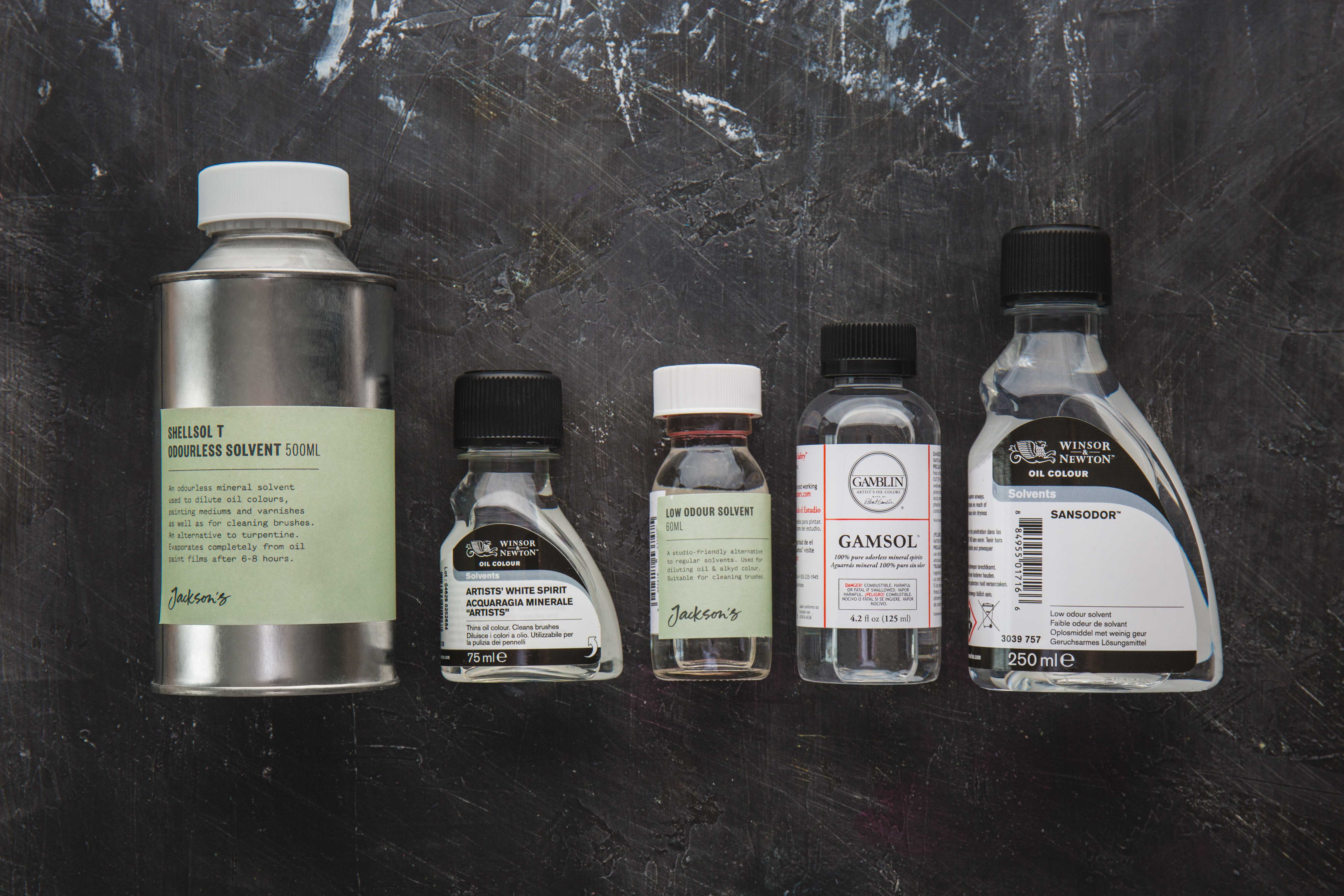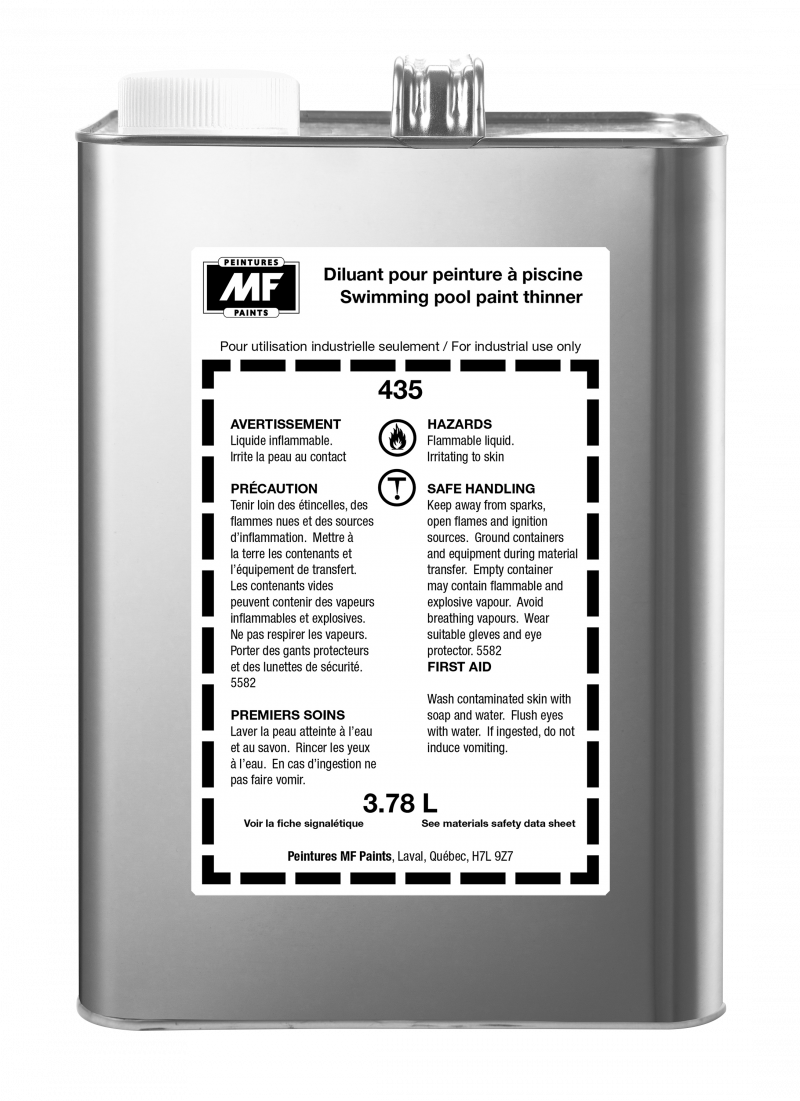Proper care extends the life of painting tools. Modern coatings are designed to dry quickly, making cleanup problematic. The paint resins bind to brush filaments and set up within a very short period of time. If you invest time in cleaning your applicators, here are some helpful tips.
- If you used oil-based paint, clean the brushes with mineral spirits or turpentine. If you used a water-based paint such as acrylic or latex, clean the brushes with warm water or mild dish soap. If you used shellac, use denatured alcohol. Place enough of the solvent to completely submerge the bristles in a plastic bowl or other small container.
- Let the brush soak in the Mineral Spirits for about a minute or until all the wax has dissolved. For speedier results, swish and press the bristles against the bottom of the jar to help dissolve any remaining wax. Once the wax has been thoroughly removed you can now clean and condition your brush using the steps listed above.
- For oil paints and stains you can clean your paint brushes with mineral spirits or paint thinner.I like using 2 glass canning jars. The lids seal very well a.
Paintbrushes
Mineral spirits or turpentine to remove oil-based paint Hot water and mild liquid dish soap to clean paint brushes that have been used to apply latex paint Immerse the paint brush in the solvent. Wipe the brush with a microfiber brush or cloth. Use a dry microfiber brush or clean cloth to wipe off the mineral spirits and any varnish left on the brush. It's okay if a little varnish residue is left on the brush, but try to get as much off as possible.
Water-Based Paints (Synthetic Brushes)

STEP 1 Rinse the brush with warm water while combing it from base to end with both sides of our Painter’s Comb™. This should loosen all partially dried paint from inside the brush.
STEP 2 Add a liberal amount of hand cleaner with pumice to the brush and work it in completely. Many hand cleaner brands will do the job—some are liquid, while others are a thick paste. Hand cleaner that is petroleum or lanolin based will help condition the brush, too. Again, use the comb to get paint out of the interior of the brush.
STEP 3 Rinse the brush until the water runs clear of all paint and hand cleaner. You may need to add some regular hand soap during this final process for very hard-to-clean primers, paints, and stains. After the final rinse, do one last comb-through with both sides of the Painter’s Comb to make sure the paint is completely removed from the center of the brush. Then spin, comb, and hang to dry. Never place a brush back into its keeper wet—always allow it to dry completely.
Oil-Based Paints (Bristle or Synthetic Brushes)
Oil-based coatings are more difficult to clean. Due to the cost and disposal problems of solvents and the time involved for the process, it may not make sense economically to clean the brushes. Instead, allow them to dry and throw them away.
However, if you do want to try to reuse them, here’s our suggestion for proper cleaning. Work excess coating out of the brush. Always read the manufacturer’s recommendations on the can label to know if mineral spirits, paint thinners, or lacquer cleaners should be used for cleaning.
Massage the proper solvent into the bristles. Change the solvent as it gets cloudy or dirty. If you think the brush is clean, do it again. For synthetic brushes, wash with solvent and then follow with the 3-step process. Natural bristle brushes should not be cleaned in soap and water. Use only the solvent recommended for thinning the coating to keep the bristles from flaring. Then spin, comb, and hang to dry. Never place a brush back into its keeper wet—always allow it to dry completely.

Roller Covers
Similar to our brushes instructions above, if you don’t wish to invest the time and effort in cleaning a roller simply let the cover dry and put it in the trash. Here are the instructions if you do wish to clean and reuse your rollers.
Water-Based Paints
STEP 1 Scrape out excess paint with a 5-in-1 tool.
STEP 2 Rinse the roller cover thoroughly with running water.

STEP 3 Wash with soap and warm water, then rinse. Repeat wash and rinse steps until water runs clear.
STEP 4 Spin until damp. To avoid matting of the fabric, stand on end to dry. Never place a roller back into its package wet—always allow it to dry completely.

Oil-Based Paints
STEP 1 Scrape out excess paint with a 5-in-1 tool.
STEP 2 Rinse the roller cover with the proper solvent (check the paint can label).
STEP 3 Repeat the wash and rinse steps until the solvent runs clear.
STEP 4 Spin until damp. To avoid matting of the fabric, stand on end to dry. Never place a roller back into its package wet—always allow it to dry completely.
General Advice
Cleaning Oil Paint Brushes With Mineral Spirits
- Every coating is different. Read the manufacturer’s cleaning instructions on the paint can label.
- Always clean immediately after use; doing so requires less time and is more effective.
- If you can’t clean your brush or roller immediately following a job, wet it with paint; seal it in plastic wrap, or a plastic bag. This keeps the brush or roller from hardening until it can be cleaned properly.
- Keep one set of brushes for latex or acrylics and another set for oils.
- The Wooster Painter’s Comb™ is a valuable tool that speeds up cleaning. The comb separates the filaments, allowing soap and water into the brush heel during cleaning, and straightens the filaments before storing.
- Fast-drying coatings or dry, hot, windy conditions require cleaning your brushes more frequently (perhaps every two to four hours). Keeping an extra set of brushes on hand will allow you to remain productive while the used brushes dry.
- Never hit a brush on a pail or the top of your shoe to get water out. It can permanently damage the brush.
